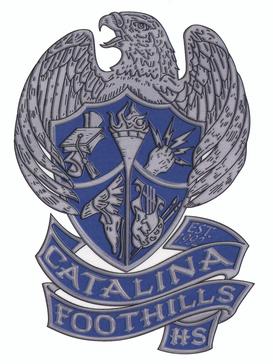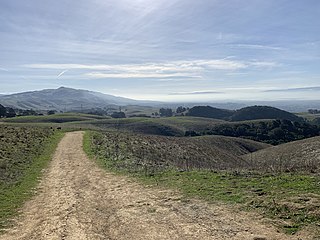
Pima County is a county in the south central region of the U.S. state of Arizona. As of the 2020 census, the population was 1,043,433, making it Arizona's second-most populous county. The county seat is Tucson, where most of the population is centered. The county is named after the Pima Native Americans who are indigenous to this area.

Casas Adobes is an unincorporated community and census-designated place (CDP) located in the northern metropolitan area of Tucson, Arizona. The population was 66,795 at the 2010 census. Casas Adobes is situated south and southwest of the town of Oro Valley, and west of the community of Catalina Foothills.

Catalina Foothills is an unincorporated community and census-designated place (CDP) located north of Tucson in Pima County, Arizona, United States. Situated in the southern foothills of the Santa Catalina Mountains, Catalina Foothills had a population of 50,796 at the 2010 census. Catalina Foothills is one of the most affluent communities in Arizona and in the U.S., with the 6th highest per capita income in Arizona, and the 14th highest per capita income in the U.S. of communities with a population of at least 50,000. The Catalina Foothills community includes some of Arizona's most expensive homes and land, and has the highest median property value. It also includes resorts, golf courses, and spas.

Oro Valley, incorporated in 1974, is a suburban town located 6 miles (9.7 km) north of Tucson, Arizona, United States, in Pima County. According to the 2020 census, the population of the town is 47,070, an increase from 29,700 in 2000. Dubbed the "Upscale Tech Mecca" of Southern Arizona by the Arizona Daily Star newspaper, Oro Valley is home to over 10 high tech firms and has a median household income nearly 50% higher than the U.S. median. The town is located approximately 110 miles (180 km) southeast of the state capital of Phoenix.

The Santa Catalina Mountains, commonly referred to as the Catalina Mountains or the Catalinas, are north and northeast of Tucson in Arizona, United States, on Tucson's north perimeter. The mountain range is the most prominent in the Tucson area, with the highest average elevation. The highest point in the Catalinas is Mount Lemmon at an elevation of 9,157 feet (2,791 m) above sea level and receives 18 inches (46 cm) of precipitation annually.

Canyon del Oro High School (CDO) is a comprehensive public high school in Oro Valley, Arizona, located 6 miles (9.7 km) north of Tucson at the base of Pusch Ridge. Established in 1964, CDO is one of three high schools of Amphitheater Public Schools and serves about 1,600 students in grades 9–12. The school name originates from the remote Canyon del Oro in the nearby Santa Catalina Mountains north of Tucson. The school mascot is the Dorado, a mythical Latin American warrior. The school colors are forest green and gold. The Dorado mascot was designed and painted on the gymnasium floor by former art teacher Diane Redhair in the mid-1960s. Her design was based on two different winning submissions by CDO students John Epling and Kenny Harris who had submitted their designs to a school-wide competition.

Amphitheater Public Schools, also known as Amphi or District 10, is the third largest public school district in Tucson, Arizona, in terms of enrollment, with about 13,500 students and a staff of about 2000 employees Amphi was established on July 3, 1893. With its headquarters in Flowing Wells, presently serves segments of North Tucson, Casas Adobes, Catalina Foothills, and the communities of Oro Valley, eastern Tortolita, and Catalina northwest of the city.
Pusch Ridge Christian Academy is a private Christian school located in northwest Tucson, Arizona, on a 40 acres (160,000 m2) campus. Pusch Ridge Christian Academy is a ministry of Catalina Foothills Church, PCA. The school is accredited by ACSI.

Catalina Foothills High School is a public high school, located in the upscale suburban community of Catalina Foothills, just north of Tucson, Arizona, United States. It is the only high school in the Catalina Foothills School District, located in the foothills of the Santa Catalina Mountains. Founded in 1992, the school now serves approximately 1,650 students in grades nine through twelve. The school mascot is the peregrine falcon, and the school colors are blue and silver. Based on the percentage of students passing or exceeding Arizona's Instrument to Measure Standards standardized test, Catalina Foothills is one of the top high schools in the state. Annually, Catalina Foothills averages over 10 National Merit Finalists.

Ironwood Forest National Monument is located in the Sonoran Desert of Arizona. Created by Bill Clinton by Presidential Proclamation 7320 on June 9, 2000, the monument is managed by the Bureau of Land Management, an agency within the United States Department of the Interior. The monument covers 129,055 acres (52,227 ha), of which 59,573 acres (24,108 ha) are non-federal and include private land holdings and Arizona State School Trust lands.

The Shawangunk Grasslands National Wildlife Refuge is a wildlife refuge located in Ulster County, New York, United States. Formerly the Galeville Military Airport, it was decommissioned in 1994 and turned over to the United States Fish and Wildlife Service in 1999. It serves as a waypoint for grassland-dependent migratory birds.

The Center for Biological Diversity is a nonprofit membership organization known for its work protecting endangered species through legal action, scientific petitions, creative media and grassroots activism. It was founded in 1989 by Kieran Suckling, Peter Galvin, Todd Schulke and Robin Silver. The center is based in Tucson, Arizona, with its headquarters in the historic Owls club building, and has offices and staff in New Mexico, Nevada, California, Oregon, Illinois, Minnesota, Alaska, Vermont, Florida and Washington, D.C.

The Endangered Species Act (ESA) was first passed in 1973 and forms the basis of biodiversity and endangered species protection in the United States. The original purpose of the Endangered Species Act of 1973 was to prevent species endangerment and extinction due to the human impact on natural ecosystems. The three most powerful sections of the ESA are Sections 4, 7 and 9. Section 4 allows the Secretaries of Interior and Commerce to list species as threatened or endangered based on best available data. Section 7 requires federal agencies to consult with Fish and Wildlife Service (FWS) or National Marine Fisheries Service (NMFS) before taking any action that may threaten a listed species. Section 9 forbids the taking of an endangered species. The first amendment to the ESA was passed by the 95th United States Congress in 1978 to "introduce some flexibility into the Endangered Species Act".

Saguaro National Park is an American national park in Pima County, southeastern Arizona. The 92,000-acre (37,000 ha) park consists of two separate areas—the Tucson Mountain District (TMD) about 10 miles (16 km) west of the city of Tucson and the Rincon Mountain District (RMD) about 10 miles (16 km) east of the city—that preserve Sonoran Desert landscapes, fauna, and flora, including the giant saguaro cactus.

Arizona is a state in the Southwestern United States. It is the 6th-largest and the 14th-most-populous of the 50 states. Its capital and largest city is Phoenix. Arizona is part of the Four Corners region with Utah to the north, Colorado to the northeast, and New Mexico to the east; its other neighboring states are Nevada to the northwest, California to the west and the Mexican states of Sonora and Baja California to the south and southwest.
The Whipple Mountains Wilderness is a 76,122-acre (30,805 ha) wilderness administered by the Bureau of Land Management (BLM). Most of the Whipple Mountains are within the wilderness area. It is located in the northeastern Colorado Desert near the Colorado River. Lake Havasu and Lake Havasu City are 25 miles (40 km) to the North. Earp, California and Parker, Arizona are 20 miles (32 km) to the South. The Parker Dam is 8 miles (13 km) due east.
Palo Verde Christian High School was a Christian High School in Tucson, Arizona. It opened in 1986 and closed due to financial difficulties when it was bought out by the Catalina Foothills Church in 2000 and renamed Pusch Ridge Christian Academy. During the Palo Verde years the mascot was the Crusaders.
Rosemont Copper is a proposed large open pit copper mine project by the Canadian mining corporation Hudbay Minerals. The project site is located within the Santa Rita Mountains and Coronado National Forest, in Pima County of southern Arizona. It has undergone a permitting review process under the direction of the United States Forest Service and the U.S. Army Corps of Engineers and has been delayed by legal judgements and suspension of its operating permit by the US Army Corps of Engineers.

Vargas Plateau Regional Park sits on a plateau in the Fremont Hills of Alameda County, California that overlooks the San Francisco Bay, Niles Canyon, and the cities of Fremont, Union City and Newark. The elevation of the park is about 1,000 feet (300 m), making it an important link with nearby ridge-top parks such as Garin Regional Park, Pleasanton Ridge Regional Park, Mission Peak Regional Preserve, and Sunol Regional Wilderness.
















